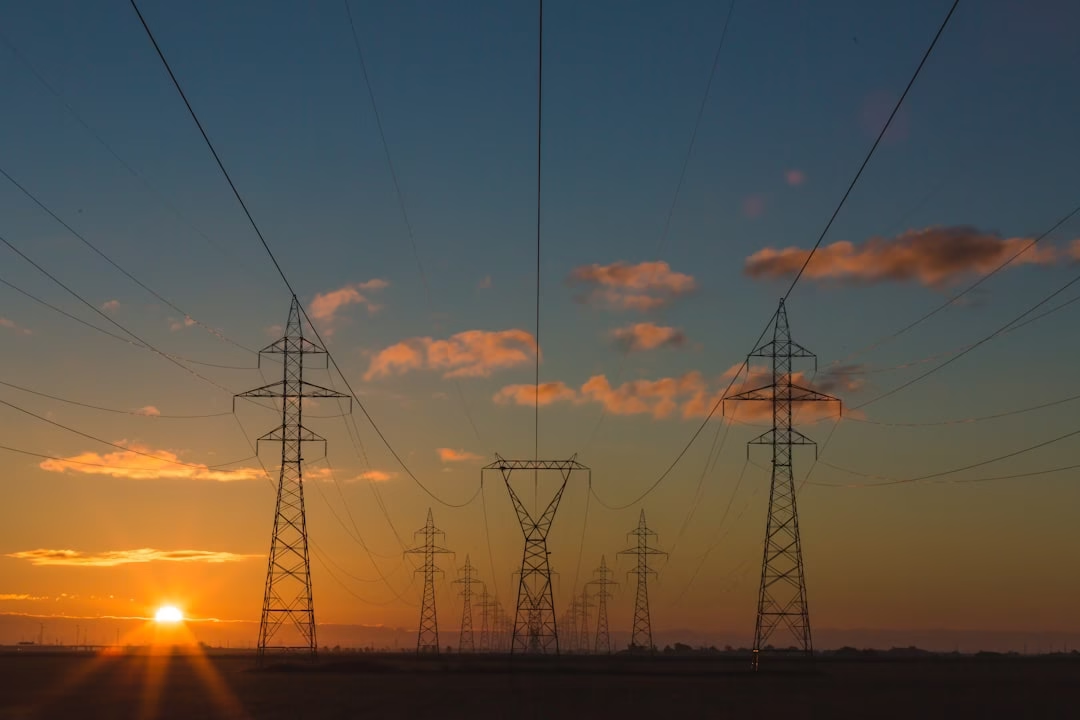Powering the Future: Navigating the Transition to Renewable Energy and Beyond

As the world grapples with the pressing need to combat climate change, the transition to renewable energy sources has emerged as a critical focal point for governments, businesses, and consumers alike. Solar, wind, and hydrogen power are leading the charge in this energy revolution, bolstered by innovative technologies and supportive policies. Governments around the globe are implementing incentives to accelerate this shift, recognizing the importance of clean energy in achieving sustainability goals. However, the journey towards a greener future is not without its challenges, particularly in the realm of energy storage, where the intermittent nature of renewable sources necessitates advanced solutions.
In this evolving landscape, nuclear energy also plays a pivotal role, offering a low-carbon alternative that could complement renewables in powering our economies. Meanwhile, traditional oil and gas companies are adapting to this energy transition, seeking new avenues for growth in a changing regulatory and market environment. Electric vehicles are poised to further reduce reliance on fossil fuels, while the economic ramifications of fluctuating energy prices continue to affect global markets.
This article delves into these multifaceted aspects of the energy transition, exploring government incentives, the complexities of energy storage, the future of nuclear power, the adaptation of fossil fuel companies, the impact of electric vehicles, and innovations in energy efficiency. Together, these elements highlight the dynamic interplay between policy, technology, and market forces shaping our path toward a sustainable energy future.
- 1. **Empowering Change: Government Incentives Driving the Shift to Renewable Energy**
- 2. **Navigating the Challenges: Energy Storage Solutions for a Renewable Future**
1. **Empowering Change: Government Incentives Driving the Shift to Renewable Energy**
Governments around the world are playing a crucial role in accelerating the transition to renewable energy through a variety of incentives and policies designed to make clean energy more accessible and economically viable. These incentives often take the form of tax credits, grants, and subsidies that lower the financial barriers for both consumers and companies investing in renewable technologies. For instance, in countries like Germany and the United States, the introduction of feed-in tariffs guarantees a fixed payment for energy produced from renewable sources, encouraging homeowners and businesses to install solar panels and wind turbines.
In addition to direct financial support, governments are also implementing regulatory frameworks that promote renewable energy adoption. Renewable Portfolio Standards (RPS) and similar mandates require utilities to source a certain percentage of their energy from renewable sources. This not only stimulates market demand but also fosters innovation as companies seek to meet these standards. Furthermore, international agreements, such as the Paris Agreement, push nations to commit to reducing greenhouse gas emissions, thereby reinforcing the urgency and necessity of transitioning to cleaner energy sources.
Public investment in research and development is another vital aspect of government involvement. By funding initiatives that advance technology in solar, wind, and hydrogen energy, governments can help lower costs and improve efficiency. For example, research into energy storage solutions, such as advanced battery technologies, is essential for addressing the intermittency of renewable energy sources, making them more reliable and scalable.
Overall, the combination of financial incentives, regulatory support, and investment in innovation is empowering a significant shift toward renewable energy. As governments continue to prioritize sustainability and climate action, the momentum for clean energy adoption is expected to grow, paving the way for a more resilient and environmentally friendly energy landscape.
The global transition to renewable energy sources is gaining momentum as countries strive to reduce carbon emissions and combat climate change. Governments are playing a crucial role in incentivizing this shift, implementing policies such as tax credits, subsidies, and renewable energy mandates. These initiatives aim to lower the costs associated with solar, wind, and hydrogen technologies, making them more accessible and attractive to consumers and businesses alike.
However, the transition is not without its challenges. One significant hurdle is energy storage, which is essential for managing the intermittent nature of renewable energy sources. Current battery technologies face limitations in capacity and efficiency, leading to ongoing research and development efforts aimed at improving energy storage solutions. As advancements are made in this area, the reliability of renewable energy systems is expected to increase, ultimately facilitating a smoother transition away from fossil fuels.
In parallel, the future of nuclear energy remains a topic of debate within the context of a low-carbon world. While some advocate for nuclear power as a stable, low-emission energy source that can complement renewables, others raise concerns about safety, waste disposal, and public perception. The challenge will be to find a balance that leverages nuclear energy’s potential while addressing these concerns.
Oil and gas companies are also adapting to the energy transition by diversifying their portfolios. Many are investing in renewable energy projects and technologies, recognizing the need to pivot from traditional fossil fuel dependence. This shift not only helps mitigate environmental impact but also positions these companies to remain competitive in an evolving energy landscape.
Electric vehicles (EVs) play a pivotal role in reducing dependency on fossil fuels, as they offer a cleaner alternative for transportation. With governments increasingly supporting EV adoption through incentives and infrastructure development, the demand for electricity generated from renewable sources is expected to rise, further solidifying the role of clean energy in a sustainable future.
The economic impact of energy price fluctuations is another critical aspect of this transition. As the world moves away from fossil fuels, price volatility in traditional energy markets can create uncertainty for consumers and businesses. However, investments in renewable energy and energy efficiency innovations present opportunities for cost savings in the long run, potentially stabilizing prices and fostering economic resilience.
In summary, the rise of renewable energy is reshaping the global energy landscape, supported by government incentives, technological advancements, and changing industry dynamics. Addressing the challenges of energy storage, while exploring the future of nuclear power and the role of electric vehicles, will be essential for realizing a sustainable and economically viable energy future.
2. **Navigating the Challenges: Energy Storage Solutions for a Renewable Future**
As the world increasingly shifts towards renewable energy sources like solar and wind, one of the most pressing challenges is energy storage. Unlike traditional fossil fuels, which provide a constant supply of energy, renewable sources are often intermittent; solar power is generated during the day, while wind energy fluctuates with weather conditions. This variability necessitates effective storage solutions to ensure a stable and reliable energy supply.
Several technologies are currently being explored to address these storage challenges. Battery storage, particularly lithium-ion batteries, has gained prominence due to its ability to store energy for use during peak demand periods. However, scaling up battery production and recycling, along with addressing environmental concerns related to mining and disposal, remains a significant hurdle.
Beyond batteries, alternative storage methods are also being developed. Pumped hydro storage, which uses excess energy to pump water uphill for later generation, has been a proven method for decades, but its geographical limitations can restrict implementation. Similarly, compressed air energy storage (CAES) captures excess energy by compressing air in underground caverns, releasing it to generate electricity when needed. While promising, CAES systems are still in the early stages of deployment and require further investment and technological advancements.
Emerging solutions like hydrogen storage are also gaining attention. By using excess renewable energy to produce hydrogen through electrolysis, it can be stored and converted back into electricity when required. This method not only provides a flexible storage option but also has the potential to decarbonize sectors that are hard to electrify, such as heavy industry and transportation.
Innovations in materials science and engineering are paving the way for more efficient and cost-effective storage solutions. Researchers are exploring advanced materials that can improve battery performance and lifespan, as well as next-generation technologies like solid-state batteries, which promise increased safety and energy density.
In summary, while the transition to a renewable energy future presents significant storage challenges, ongoing advancements in technology and innovative approaches offer hope. By investing in a diverse array of energy storage solutions, governments and industries can ensure a reliable energy supply that supports the integration of renewable sources, ultimately facilitating a more sustainable and low-carbon energy landscape.
In conclusion, the transition to renewable energy is not just an environmental imperative but also a multifaceted economic opportunity. With governments taking proactive steps to incentivize the adoption of solar, wind, and hydrogen power, we are witnessing a significant shift towards cleaner energy sources. However, the challenges of energy storage remain a critical hurdle that must be addressed to ensure a reliable and sustainable energy supply.
As we look to the future, nuclear energy presents a potential solution in the low-carbon landscape, offering a stable energy source that can complement renewables. Additionally, the adaptation of oil and gas companies to this evolving energy paradigm highlights the industry's recognition of the need for transformation. Electric vehicles play a pivotal role in reducing our dependence on fossil fuels, further supporting the shift towards a sustainable energy ecosystem.
The economic implications of fluctuating energy prices and innovations in energy efficiency underscore the importance of strategic planning and investment in this transition. By harnessing technological advancements and fostering collaboration across sectors, we can navigate the complexities of the energy landscape and pave the way for a cleaner, more resilient future. In embracing renewable energy, we not only combat climate change but also unlock new economic possibilities for generations to come.





